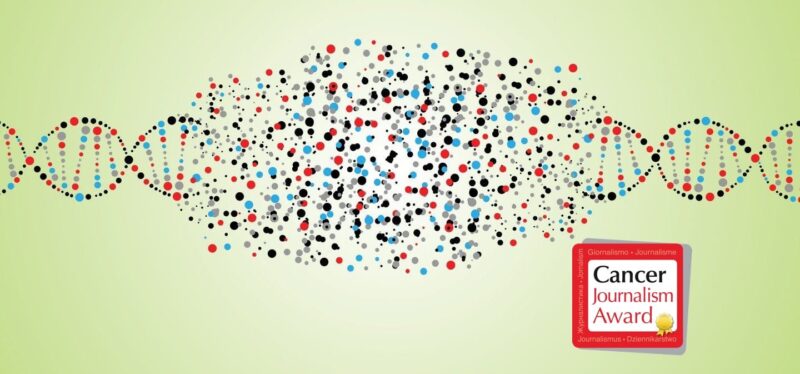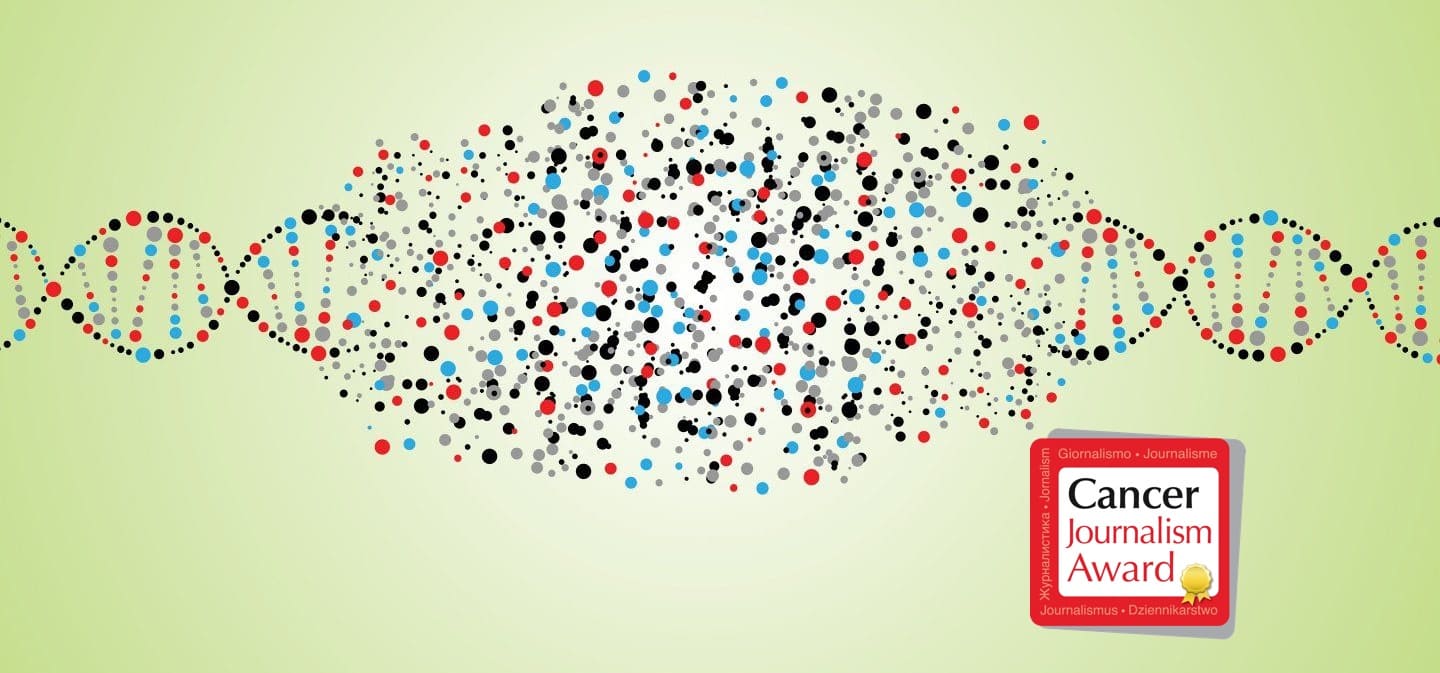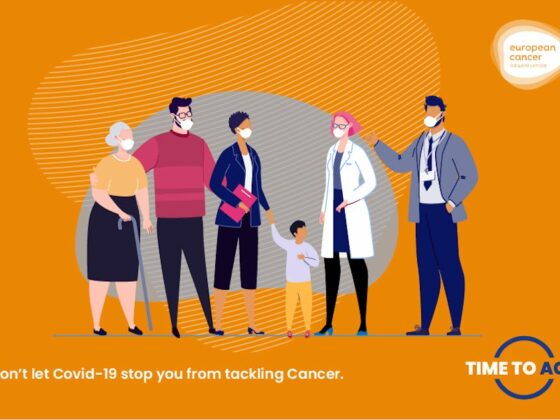Ten years ago, Tony Herbert developed a lump on the right side of his chest. The clump of tissue grew and became painful and he was tested for breast cancer. The result was positive.
“I had surgery and chemotherapy and that worked,” he says. But how had Herbert managed to develop a condition that is so rare in men? Only about 400 cases of male breast cancer are diagnosed every year in the UK compared with around 55,000 in women. A genetic test revealed the answer. Herbert had inherited a pathogenic version of a gene called BRCA2 and this mutation had triggered his condition.
The genetic link was a crucial revelation that not only played a key role in Herbert’s recovery and survival over the next decade, but which has also helped many women and men fight breast cancer as well as cancers of the ovary and prostate. All three cancers are now known to be linked to mutated versions of BRCA2 – a gene whose existence was first revealed 25 years ago this month in a paper in Nature.
Today it is calculated that in the UK alone there are tens of thousands of people who carry pathogenic versions of the gene, which is known as Breast Cancer 2 or BRCA2. It can be inherited from either parent and can spread through lineages with devastating effect. Revealing its existence – which was achieved by a research team led by Michael Stratton, who was then working at the Institute of Cancer Research in London – has revolutionised the treatment of cancers for a great many individuals.
In the case of Herbert, his inheritance of the mutated gene meant he was susceptible not just to breast cancer but to prostate cancer as well, as doctors realised. “I was monitored for prostate cancer and it was found to be at quite an advanced stage. I was given radiotherapy and to be honest I now feel fine,” said Herbert who campaigns to raise awareness about breast cancer in men.
“One breast cancer gene, BRCA1, had already been found and it was unlikely there would be a second, I was told”
The crucial point is that his fight against both the cancers that have touched his life would not have been possible without the discovery of BRCA2. Pinpointing the mutated, pathogenic gene, which is passed through families leaving carriers prone to breast, ovary and prostate cancers, was a medical milestone that involved UK scientists in a desperate race against US companies who wanted to find the gene and patent it for private gain. For good measure Stratton – who is now director of the Wellcome Sanger Institute in Cambridgeshire – was told by some researchers that he was wasting time when he launched his project. “One breast cancer gene, BRCA1, had already been found and it was unlikely there would be a second, I was told,” Stratton told the Observer.
Nevertheless he and his colleagues persisted and began investigating several large UK and Irish families who were suffering grim numbers of cases of breast and ovary cancers. Was there an unknown mutant gene being passed from one generation of women to the next, one that was leaving them vulnerable to tumours? “We looked at hundreds of genetic markers to see if we could find one that was carried only by women who got cancer. That would tell us where the new cancer gene was located.”
Genetic markers are small pieces of DNA that are found stretched across the 46 chromosomes that make up the human genome. A first attempt was made using 250 of such markers but failed to produce a result. “It was dispiriting,” admitted Stratton.
But the team persisted and developed a second set of 300 different markers. “I came into the laboratory one day and the results of our study were waiting. They clearly showed a piece of DNA on chromosome 13 that tracked women who went on to develop cancer. We had discovered a new breast cancer gene and, for good measure, we had found out where it lay on the human genome. It was a wonderful feeling, though we realised we still had to pinpoint the gene itself.”
“We did not believe in patenting genes to make profits, however. So we decided to go our own way”
The breakthrough also came with a complication. Stratton’s team had been cooperating with several laboratories in their BRCA2 hunt, including one in the US. “This group was backed by the company Myriad Genetics who had found the first breast cancer gene, BRCA1, and who had taken out a patent on it. We did not believe in patenting genes to make profits, however. So we decided to go our own way.”
So the race to find BRCA2 began. Initially the prospects for Stratton’s team looked poor. Myriad Genetics had already found one such gene. It had the experience and also plenty of funds to back its search for another cancer gene. However, an unexpected ally stepped in when the newly opened Sanger Centre (later renamed the Wellcome Sanger Institute) offered to turn its DNA sequencing prowess to explore the region of chromosome 13 where BRCA2 was known to reside.
Sanger scientists provided precise details of the millions of units of DNA on that part of chromosome 13. “One morning we went through the most recent data and found a tiny piece of a gene on the chromosome that was missing, a deletion of several DNA units that would have destroyed its function as the gene in which it lay,” said Stratton.
Over the next two months, the team discovered different abnormalities in this gene in different breast cancer families
Crucially women who inherited that deletion in the family they were studying usually went on to develop breast cancer. “That was exactly the sort of thing that we had been looking for,” said Stratton. “We had landed right on BRCA2. It was an extremely humbling moment.”
Over the next two months, the team discovered different abnormalities in this gene in different breast cancer families. “It was incontrovertible evidence that this gene was BRCA2,” added Stratton. In most families, BRCA2 plays a role in DNA repair and so helps to prevent the triggering of cancers. In families where the gene is damaged, that protection is lost. The discovery was published in Nature and had a dramatically speedy clinical impact. “A woman in one of our families was very worried she would get breast cancer and was considering a double mastectomy. We tested her straightaway and found she had not inherited the mutated gene that ran in her family. That meant we were able to tell her she didn’t need the operation,” added Stratton.
Since then thousands of others have benefited from screening and treatments that have emerged in the wake of BRCA2’s discovery, a point stressed by Clare Turnbull, professor of cancer genomics at the Institute of Cancer Research. “If a woman gets breast cancer, and we find she is a gene carrier, we can treat her for that condition and also offer to operate to remove her ovaries if she’s completed her family – because we now know of BRCA2’s link to ovarian cancer. Such an operation dramatically reduces the likelihood of women developing ovarian cancer.
In addition, siblings – who might have also inherited a pathogenic gene from a mother or father – can be tested. “For those who test negative, that knowledge relieves anxiety,” added Turnbull. “For those who test positive, we can offer breast cancer screening while they are still in their 30s. They can also choose to have a mastectomy.” In addition, drugs that can counter the effects of the pathogenic version of BRCA2 gene have also been developed, added Turnbull.
More recently, it was found that cases of prostate cancer in men were also linked to the gene
In the beginning, breast and ovary cancers formed the main targets of BRCA2 research. However, more recently, it was found that cases of prostate cancer in men were also linked to the gene, as was found in the case of Herbert.
“If a man inherits a pathogenic mutation in BRCA2, then, when he’s in his early 60s, we now know he will have a 20% chance of developing prostate cancer. That compares with the normal risk for that age of about 3%,” said Professor Rosalind Eeles, at the Institute of Cancer Research. “In addition, those cancers are a lot more aggressive than standard cases of prostate cancer.”
As a result, new European medical guidelines have recently recommended that men over the age of 40 who have a pathogenic BRCA2 mutation should be offered annual screening for prostate cancer. “We also hope it will become a UK guideline in the near future,” added Eeles.
In addition, Eeles said research showed that prostate cancers in men with BRCA2 mutations are more likely to spread to surrounding tissue but would respond better to surgery to remove tumours as opposed to using radiotherapy alone. “All this is a consequence of finding BRCA2 25 years ago,” she added.
But testing for BRCA2 can also bring stress, a point made by Dee Gardner. In 2013, after being treated for ovarian cancer, she was urged to have a BRCA2 test. “It was positive and I was completely sideswiped. I had three children – all young adults then – and I now knew each had a 50‒50 risk of carrying a gene that could predispose them to cancer.”
Gardner’s children have since had a BRCA2 test of their own. However, there was a further problem. “I come from a very large family with lots of cousins and I realised it was up to me to tell them they could also be carrying the gene. It really weighed heavily on me. They needed to be told of the risks,” said Gardner, a social worker who lives in Colchester, Essex, with her husband, Howard.
In the end, Gardner wrote to many of her cousins to pass on the troubling news, but it was a strain. “It was tough. I knew my letter would cause pain. The trouble is that there is no emotional support for people who are put in this situation, and that lack needs to be addressed.”
On the other hand, Gardner’s BRCA2 status – picked up because she developed ovarian cancer – led her to undergo investigations for signs of breast cancer. “I was found to be in the early stages of a tumour and so elected to have double mastectomy,” she added. “So yes, finding I had the BRCA2 gene may also have saved my life.”
BRCA2: the facts
- Each of us has around 20,000 genes that direct the manufacture of the proteins from which our bodies are constructed. These genes are bundled together in chromosomes. We get 23 of these chromosomes from our mothers and 23 from our fathers. The genes that lie along these chromosomes are made of deoxyribonucleic acid, DNA, which is made up of twin chains of complex chemicals that coil around each other to form a double helix.
- BRCA2 is found on chromosome 13. As we each have two chromosome 13s – one inherited from our mother, one from our father – if one parent has a mutant BRCA2 gene there will be a 50-50 chance they will pass it on to one of their children.
- BRCA2 is involved in repairing damaged DNA and helps to keep cells in a healthy condition. When the gene mutates and becomes pathogenic, the gene no longer helps to keep DNA from becoming damaged – and this raises the risk that a cell will become cancerous and grow uncontrollably. BRCA2 is said to be a tumour suppressor gene because it helps to stop cells from growing and dividing too rapidly or in an uncontrolled manner.
- BRCA2 is not the only gene whose mutations are linked to increased risks of developing breast cancer. Pathogenic versions of BRCA1 have a similar effect while abnormal versions of another gene known as PALB2 has also been found to increase risk. The prospect of getting breast cancer over an average lifetime for a woman is 12%. However, if they carry mutated versions of BRCA1 or BRCA2 that risk rises to around 70%. An abnormal version of PALB2 raises that risk to around 50%.
- In addition to increasing prospects of developing breast cancer, mutant forms of BRCA2 also raise risks of a carrier developing ovary, prostate and pancreatic cancer.
Robin McKie is the Science and Environment Editor for The Observer.
This article was first published in The Observer, 10 January 2021. It is republished with permission. © Guardian Media Group
The Cancer Journalism Award is an annual award run by the European School of Oncology, that recognises and encourages excellent cancer journalism.












